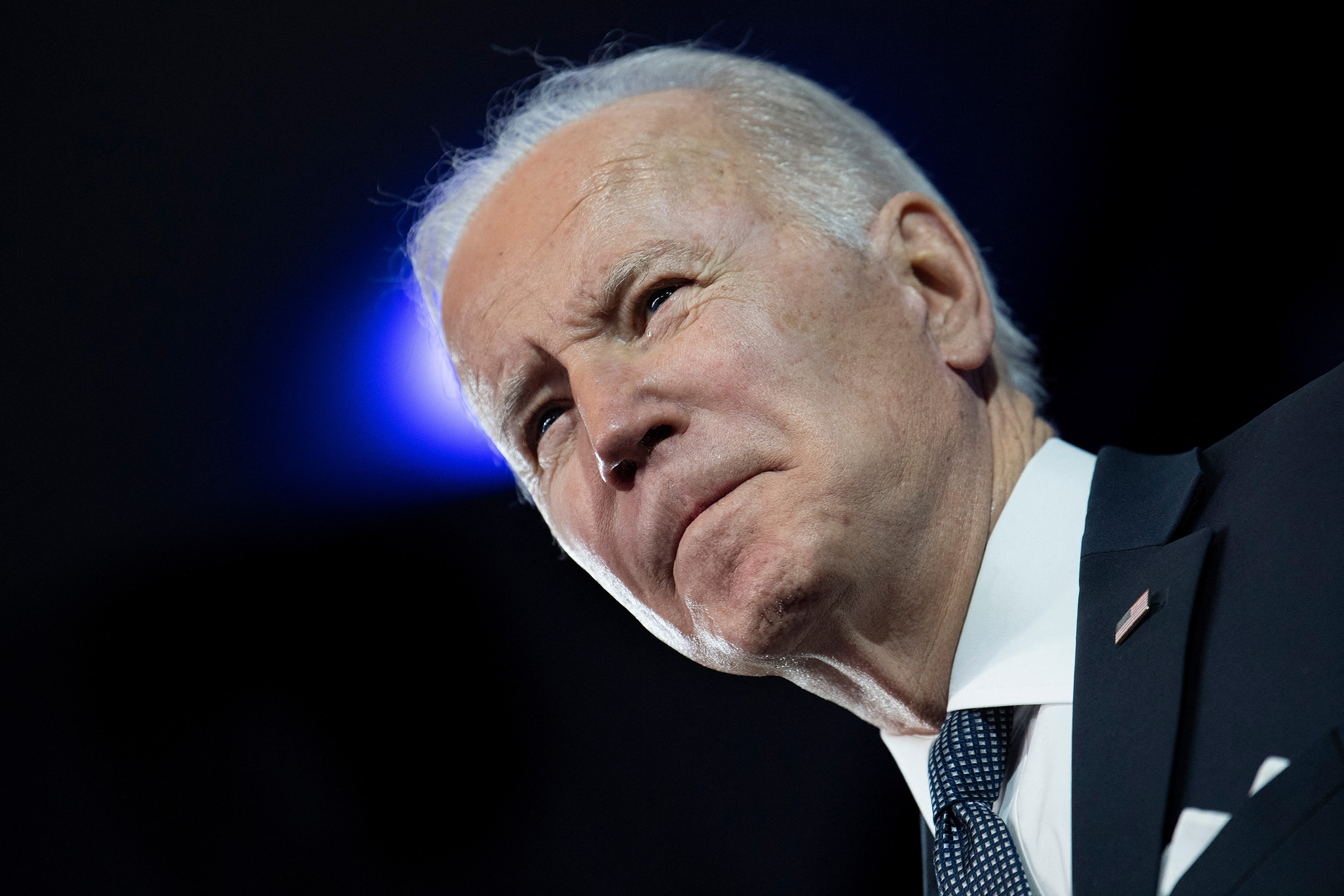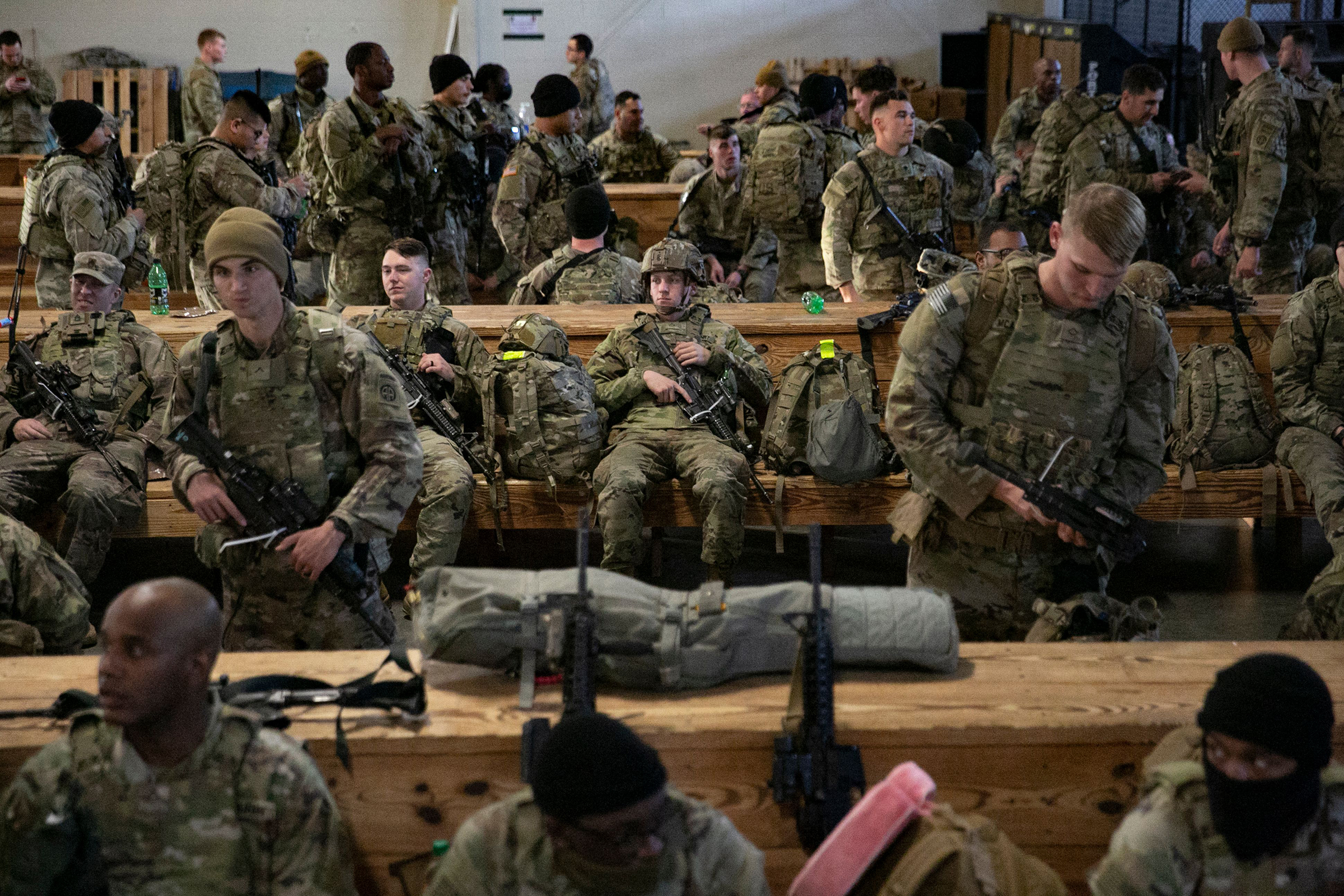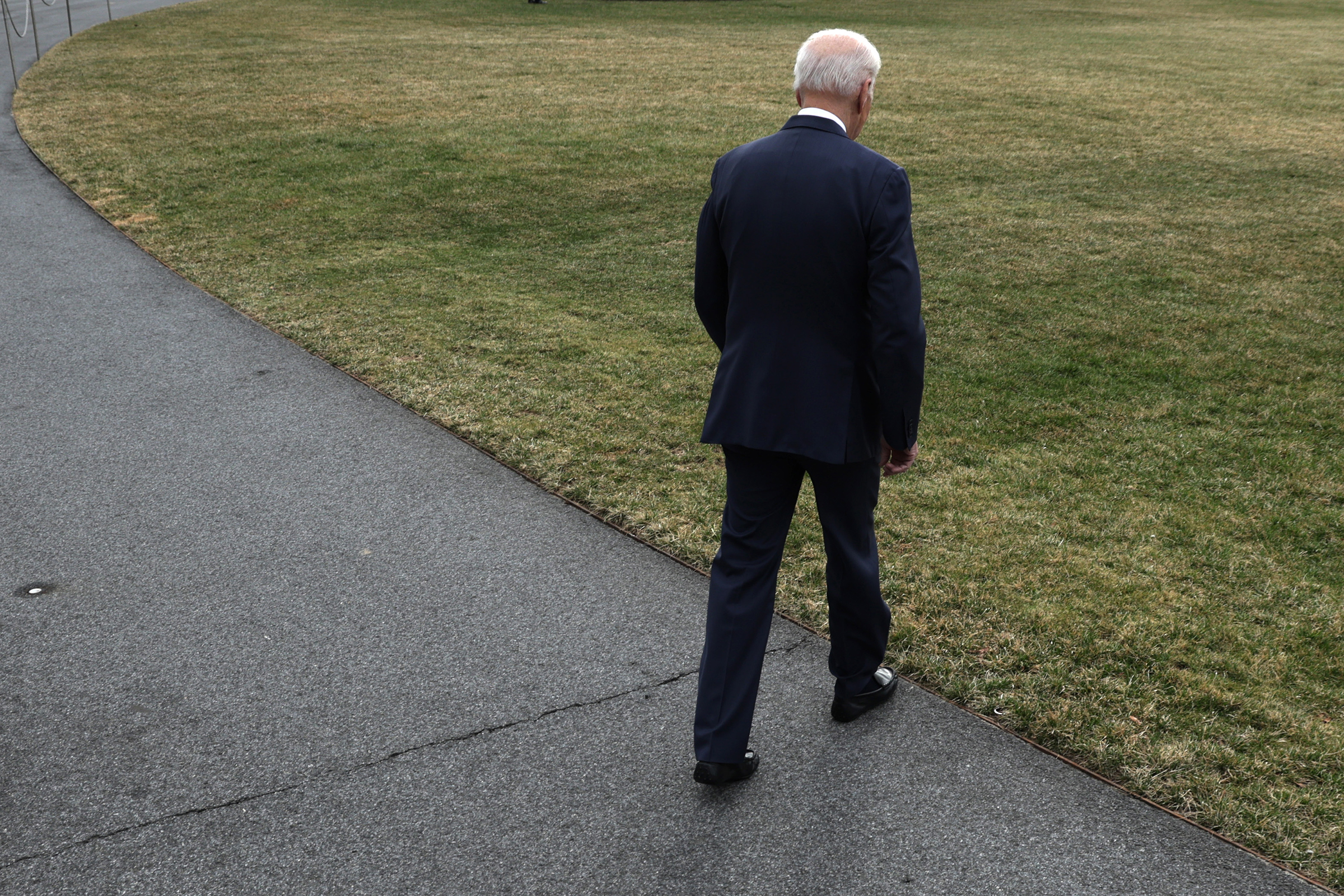
Joe Biden spent the weekend before Valentine’s Day at Camp David, on the easternmost edge of the Blue Ridge Mountains. Russia had amassed 150,000 troops on the borders of Ukraine, and U.S. intelligence officials believed Moscow had deployed enough firepower to take the Ukrainian capital Kyiv in 48 hours.
At the presidential retreat dotted with oak, poplar, and hickory, Secretary of State Antony Blinken briefed the President inside a secure, wood paneled room through an encrypted video conferencing system and recommended that the U.S. take the next step in its detailed response plans. It was time to evacuate the U.S. embassy from Kyiv. Biden agreed.
Russia’s military buildup had passed another “trip wire” on a set of planned steps worked out by an ad hoc group of experts from multiple agencies convened late last year to address the growing crisis in Ukraine. Days before, Biden had signed off on another proposed action from the team, sending to Poland 3,000 elite 82nd Airborne Division paratroopers from their home base at Fort Bragg in North Carolina. Biden personally made the decision to declassify and release information on Feb. 3 about a potential Russian plan for a so-called “false flag” operation involving a faked video of a battle that the U.S. feared Russia could use as a pretext for invading Ukraine.

Biden’s moves, described by White House officials, have shown that the U.S. is reacting to Russian President Vladimir Putin’s military buildup surrounding Ukraine as if an invasion is possible and potentially imminent. The Russian military on Tuesday announced it was pulling some units in the region back to bases, but American and European officials cautioned that they hadn’t seen evidence of a retreat. Instead, U.S. intelligence officials have seen a buildup of thousands of Russian forces in recent days.
Biden told reporters at the White House on Thursday he thought the risk of a Russian invasion was “very high” and that Russia’s declared drawdown was a “false flag” operation. “Every indication we have is they’re prepared to go into Ukraine, to attack Ukraine,” Biden said on the South Lawn of the White House. “My sense is that it will happen within the next several days.”
As the standoff on the border continues, Putin has already achieved his goal of staying at the top of Biden’s foreign policy priority list. But the Russian autocrat is failing so far at his other objective: to weaken and fracture the North Atlantic Treaty Organization (NATO). The U.S., France and Germany have so far remained closely aligned in countering Putin’s aggression. Biden has managed to keep European allies aligned in telling Putin there would be a devastating economic cost to Russia if Ukraine’s borders are further violated.
Biden and Putin remain locked in an effort to throw each other off balance through a mix of diplomatic, intelligence, military and economic moves. Who is winning remains a subject of intense debate and significant consequence. The reviews of Biden’s performance are mixed. Some experts see the American President effectively countering Putin’s efforts to drive a wedge between the U.S. and its allies. “This has offset some of the problems we’ve had in rallying the allies since the botched withdrawal from Afghanistan,” says Alexander Vershbow, former U.S. ambassador to Russia from 2001 to 2005 and former deputy secretary general of NATO from 2012 to 2016. “The U.S. is showing much more competent leadership. That is reassuring to allies as this crisis takes other twists and turns.”
Others point out that Putin has found a way to control the attention of the American superpower, and Biden has been forced to react at every turn. After Putin ramped up the Russian military presence near Ukraine early last year, Biden traveled to Geneva in June with the hope of setting relations between Moscow and Washington on a more even keel that could be handled by a second tier of bureaucrats. “The premise of hoping they could keep Russia quiet was misplaced,” says James Goldgeier, a professor of international relations at American University. “In response to a buildup of forces, the President offered a summit. That was one sign that if Putin wanted to get attention, this was a good way to do it.”
The stakes are high for Biden. A Russian invasion of Ukraine would likely rattle Wall Street, spike gas prices when the U.S. is already experiencing high inflation, and hand Republicans another political attack line on the unpopular Democratic president. After Biden’s chaotic troop withdrawal from Afghanistan last summer, this is his second major foreign policy test as President, and he has little room for error.
So far, Biden’s strategy has been aimed at keeping Putin on his heels and preparing responses if Russia attacks. Ramping up U.S. troop deployments in Eastern Europe, moving embassy staff, and declassifying intelligence reports on Russian intentions are steps designed by a group first brought together by the White House in November. Led by the National Security Council’s director for strategic planning, Alexander Bick, the group calls itself a “tiger team,” a phrase used to describe the group brought together by NASA in 1970 to bring the Apollo 13 astronauts safely back to Earth after an oxygen tank explosion. It includes officials and technical experts from the intelligence community, the State Department, the Treasury Department, the Department of Homeland Security, the Office of the Secretary of Defense, the Office of the Joint Chiefs of Staff, the Department of Energy, the U.S. Agency for International Development.
The group worked to consider what actions could deter a Russian attack, as well as create a sequence of actions to set in motion if Russia does invade Ukraine that includes sanctions, troop movements, diplomatic messages, security for embassy personnel, humanitarian assistance, and cyber responses. A senior Administration official involved in the effort says the main focus of U.S. actions so far has been to deter and dissuade Russia, but that National Security Advisor Jake Sullivan also felt it was necessary to have planning ready for actions to take in the weeks after a Russian invasion. The team led two “table top exercises,” one with cabinet secretaries and another with their deputies, to “road test” the planned responses and identify any gaps, says the official. “The reality is that what the Russians may end up doing is not likely to be a 100 percent match for any of these scenarios,” Jon Finer, principal deputy national security advisor, said in a statement this week. “But the goal is for them to be a close enough facsimile of what they end up doing that the plans are useful in terms of reducing the amount of time we need in order to respond effectively.”
One step the group proposed has been to release intelligence information in near-real time about Russia’s plans. The objective is to undermine Russia’s ability to justify an attack based on false claims. Biden liked the idea and pushed ahead with it. “We’ve been transparent with the American people and with the world about Russia’s plans and the seriousness of the situation so that everyone can see for themselves what is happening,” Biden said on Feb. 15 during a speech in the East Room of the White House about Russia’s military buildup around Ukraine. “We have shared what we know and what we are doing about it.”
Inside Washington’s foreign policy circles, this tactic is known as “deterrence by disclosure.” It’s having an impact, says Vershbow. The U.S. releases have “definitely kept the Russians on the defensive, even have forced them to revise some of their plans for false flag operations or coup plots that have been revealed,” says Vershbow.
U.S. intelligence officials believe that Putin hasn’t made up his mind whether to invade or not and could still launch some sort of incursion in the coming days and weeks. But there are signs Putin’s gambit is backfiring. Countries in Europe are so far holding together with the U.S. against Russia’s aggressive moves. The talks to counter Putin have “brought NATO closer together” with a “more unified message and a greater sense of resolve,” Vershbow says. “You need to thank Putin and the Russian buildup for bringing the allies together as much as U.S. diplomatic skills.”

What’s clear is that even if Putin delays an invasion of Ukraine, he’s not going to want to leave center stage. Biden came into office wanting to focus his foreign policy on rallying democracies in Asia and countering China’s growing influence. But Putin has other ideas. “Putin has made it very clear that he’s not prepared to be relegated to the second tier of U.S. foreign policy issues, and that’s something that will have to be handled by Biden personally,” says Eugene Rumer, an expert on Russia and Eurasia at the Carnegie Endowment for International Peace, a think tank in Washington. “Putin actually likes instability. Putin likes to take us by surprise. Putin likes to flex his military muscle where he can.”
The tit-for-tat exchanges ratcheted up on Thursday. Russia expelled the No. 2 ranked American diplomat in Moscow, and there were reports of shelling in eastern Ukraine and the Russian military moving supplies of blood for troops toward the front lines. Blinken peeled off from a planned trip to Germany Thursday morning to address the spike in tensions at the United Nations in New York.
Putin, now that he’s got Biden’s attention, is unlikely to let it go.
More Must-Reads from TIME
- Caitlin Clark Is TIME's 2024 Athlete of the Year
- Where Trump 2.0 Will Differ From 1.0
- Is Intermittent Fasting Good or Bad for You?
- The 100 Must-Read Books of 2024
- Column: If Optimism Feels Ridiculous Now, Try Hope
- The Future of Climate Action Is Trade Policy
- FX’s Say Nothing Is the Must-Watch Political Thriller of 2024
- Merle Bombardieri Is Helping People Make the Baby Decision
Contact us at letters@time.com